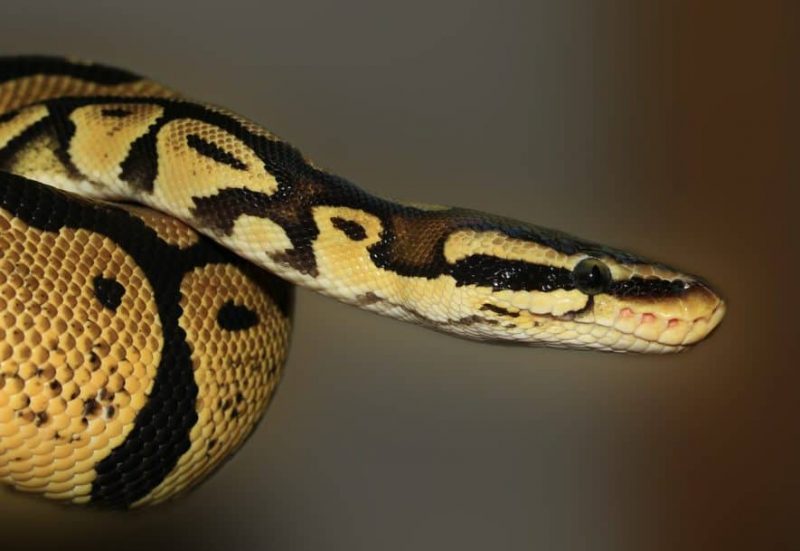Your First Ball Python Snake – Things to Remember

Bringing home your first ball python is an exciting endeavor that marks the beginning of a unique and rewarding journey into the world of snake ownership. Ball pythons, also known as royal pythons, are one of the most popular snake species kept as pets due to their manageable size, gentle demeanor, and fascinating appearance. However, caring for these incredible creatures requires knowledge and commitment. In this article, we will explore essential considerations and tips for first-time ball python owners, ensuring a fulfilling and responsible experience.
Understanding the Basics:
Before acquiring a ball python, it’s crucial to familiarize yourself with the species’ basic characteristics and requirements. Ball pythons are native to West and Central Africa, and they get their name from their defensive habit of curling into a tight ball when threatened. These snakes have a lifespan of 20 to 30 years, making them a long-term commitment.
Proper Enclosure Setup:
Creating a suitable habitat is paramount for your ball python’s well-being. Invest in a secure and escape-proof enclosure with proper ventilation. The size of the enclosure should be appropriate for the snake’s size – a juvenile might thrive in a smaller enclosure, but as it grows, a larger one will be necessary. Provide hiding spots, branches, and a water bowl to replicate their natural environment.
Temperature and Humidity Control:
Maintaining the right temperature and humidity levels is crucial for a ball python’s health. These snakes require a warm side with temperatures ranging from 88-96°F (31-36°C) and a cooler side around 78-80°F (26-27°C). Use a thermostat to regulate temperatures and ensure a proper gradient. Humidity should be kept between 50-60%, with a slight increase during shedding.
Feeding Routine:
Ball pythons are constrictors, meaning they subdue their prey by squeezing it. In captivity, they typically feed on rodents. Young snakes eat smaller prey more frequently than adults. Establish a consistent feeding schedule, offering appropriately sized prey every 7-10 days for juveniles and every 10-14 days for adults. Ensure the prey is properly thawed and at an appropriate temperature before feeding.
Handling with Care:
Ball pythons are generally docile, but they may be stressed or defensive, especially during the initial days in a new environment. Allow your snake time to acclimate before attempting to handle it. When you do handle your python, be gentle and avoid sudden movements. Frequent, short sessions will help build trust and reduce stress for both you and your snake.
Health Monitoring:
Regular health checks are essential to catch any potential issues early. Monitor your ball python’s skin, eyes, and behavior. A healthy snake should have clear eyes, shed its skin in one piece, and exhibit alert and active behavior. Any signs of mites, respiratory issues, or abnormal behavior should prompt a visit to a reptile-savvy veterinarian.
Shedding Considerations:
Like all snakes, ball pythons shed their skin periodically as they grow. Ensure a humid hide is available during the shedding process to help the snake remove its old skin more easily. Avoid handling during shedding, as this can be a stressful time for the snake.
Veterinary Care:
Finding a reptile-friendly veterinarian is crucial for your ball python’s well-being. Regular check-ups are essential, and a qualified veterinarian can provide guidance on vaccinations, parasite prevention, and other health-related concerns specific to your snake.
Respect Their Nocturnal Nature:
Ball pythons are nocturnal, meaning they are most active during the night. Respect their natural behavior by providing a dark and quiet environment during the day. Avoid unnecessary disruptions, and use low-wattage or infrared bulbs for nighttime heating to mimic the natural cycle.
Educate Yourself Continuously:
Snake ownership is a continuous learning process. Stay informed about new research, husbandry practices, and any advancements in reptile care. Engage with online communities, attend reptile expos, and read reputable books to enhance your knowledge and provide the best possible care for your ball python.
Conclusion:
Owning a ball python can be a fascinating and fulfilling experience when approached with the right knowledge and commitment. Understanding the basics, creating an optimal environment, and consistently monitoring your snake’s health are essential components of responsible ownership. By following these guidelines and continuously educating yourself, you’ll embark on a rewarding journey as a ball python enthusiast, fostering a strong bond with your scaly companion for years to come.




